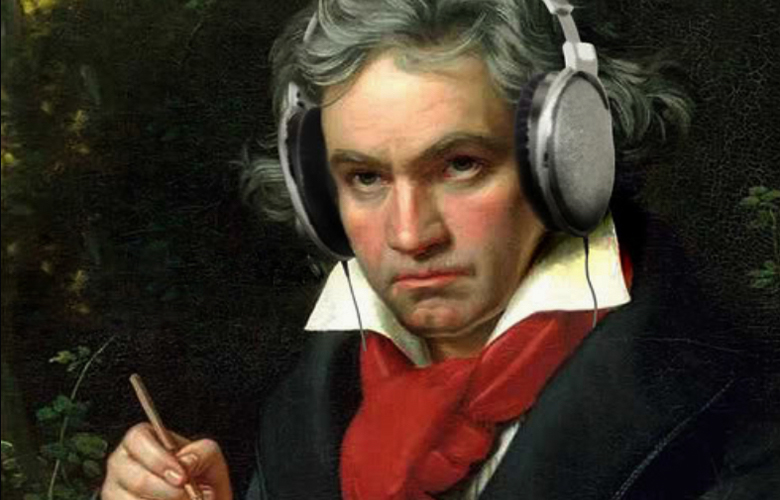
Many classical musicians have been dedicated to their craft since childhood: they’ve spent thousands of hours perfecting their playing technique, studying theory and harmony and history of music, taking lessons with awe-inspiring (and occasionally fear-inducing) professors, and developing a richness of sound that can fluctuate deftly between dramatic passion and subtle nuance, to make even the most hardened of hearts shed a tear of emotion at such sonic beauty! How do we capture in audio the complex compositions of classical music and the natural resonance of these acoustic instruments, and do justice to the sound that classical musicians and singers have worked so hard to create? Goodbye overdubs and hardcore effects processing: classical music recording and production is generally all about finding the most flattering acoustic space to record in, and capturing the musical instrument or voice in a way that best brings out its natural sonic qualities.

One of the most important aspects when planning a classical music recording is finding a space with acoustics that will cradle the music in a glorious bath of reverb – not too much and not too little. When recording many other genres, we’re often striving for a dry-as-a-bone, deadened studio acoustic that will give us the most control over the sound so we can shape it later. Classical music, on the other hand, doesn’t require overdubbing, and so it’s in our best interest to record it in a nice-sounding space. For example, when listening to a live choral performance, isn’t the experience made so much better by those epic cathedral echoes? We also need to find a quiet place without too much external noise – there’s nothing more annoying than having to stop recording five times because five fire trucks have decided to pass by just at that moment! It’s important to do some research on the instruments and the music to be recorded, to be able to prepare an appropriate recording setup. Whether it’s a solo instrumentalist or a full opera production with orchestra will affect our choice and placement of the microphones, and the number of inputs needed.
Our aim is to capture a performer or ensemble playing together in a great-sounding acoustic – so the workflow is more linear or horizontal than it is vertical. We’re not overdubbing and layering new sounds on top, but we can capture several takes of the same music and then join the best takes together until we have the whole piece, so it sounds like one performance. Because of this way of working, it’s essential that the performer is as well-prepared as they can be, as we can’t make detailed corrections of pitch or timing as we can in other genre recordings (autotune is a no-no!). As we’re recording natural acoustic sounds that can’t be “fixed in the mix” (did I mention no autotune?), it’s important to choose microphones and pre-amps that will do an excellent job of capturing that audio faithfully without colouring the sound too strongly. When placing microphones, we should think about how and where the sound of an instrument is generated, and how it resonates in the acoustic space. A common basic technique is to use a stereo pair of microphones to capture a musician or a whole ensemble within its acoustic, and then to add “spot mics” – microphones placed closer to individual instruments – to capture more details. If there’s the luxury of an abundance of microphones, we might sometimes add an extra pair of microphones even further away from the sound source to capture more of the acoustic space, and then we can blend all of these microphones together, to taste.
Mixing classical music usually involves finding a pleasing balance between the recorded channels (for example, the stereo pair, spot mics, and ambient mics), applying suitable panning, noise reduction, and light EQ, and limiting as necessary (perhaps compression for overly-excited percussion or other highly dynamic instruments). If it’s a large ensemble recording, we might use automation to bring up solo parts if they are shy and need a little help, or to highlight interesting musical details and textures. Often using a touch of digital reverb can add a smooth and satisfying sheen. Especially if a perfect-sounding recording space is just not available (it often happens): some epic digital reverb can help to glow up a flat and boring-sounding space.
Aside from live concert recordings, a lot of classical music post-production lies in the editing: often there’ll be several takes of the same material, and the challenge is to select the best performances and stitch it all together in a seamless way so that the transitions can’t be heard – while maintaining the original energy and pacing of the performance, and not going overboard on crazily detailed editing, as that’s kind of cheating (see TwoSetViolin’s hilarious video 1% Violin Skills 99% Editing Skills)! It is an advantage – and probably essential in some situations – to be able to read music scores. It’s really helpful to follow the score as the musicians are playing, to write notes on the best (and worst) takes, to guide them and suggest what they might like to repeat, change or improve, and to make sure that all parts of a piece have been recorded.
The world of classical music production is an exciting space where audio engineers, producers, and musicians collaborate closely together to immortalise wonderful compositions in audio so that a wider audience can hear and enjoy them. If you’d like to get into classical music production, there’s no better way than to learn by jumping in and practising doing lots of recordings – try different mics and positions in different acoustic spaces, listen to lots of classical music recordings, read up on the different instruments, and use your ears as your most important tool. You’ll soon be Bach for more!
A Formal Audio Education: The Pros and Cons
Home Recording with Kids in the House


The mission of SoundGirls.org is to inspire and empower the next generation of women in audio. Our mission is to create a supportive community for women in audio and music production, providing the tools, knowledge, and support to further their careers. SoundGirls.Org was formed in 2013 by veteran live sound engineers Karrie Keyes and Michelle Sabolchick Pettinato and operates under the Fiscal Sponsorship of The California Women’s Music Festival, a 501(c)3 non-profit organization. In 2012, Karrie and Michelle participated in the “Women of Professional Concert Sound” panel at the AES Conference in San Francisco. The panel was hosted by the Women’s Audio Mission (WAM) and moderated by WAM founder Terri Winston. Terri brought together five women working in live and broadcast audio. The groundbreaking panel (which also included Jeri Palumbo, Claudia Engelhart and Deanne Franklin), provided young women and men a glimpse into life on the road, tips and advice, and a Q & A with the panelists. More importantly though, was how incredibly powerful the experience was for the panelists. We had all been in the business for 20 years or more, yet most of us had never met before that day and within minutes we bonded like long-lost sisters. We were struck by how similar our experiences, work ethics, and passions were and wondered why our paths had never crossed and how our careers would have been different had we been there to support each other through the years. Each of us are strong on our own, but together we were even stronger and a powerful force. We were empowered. Each of us had been asked hundreds of times in our careers: Are there other women doing sound? How did you get into sound? How would a young woman go about getting into sound? Through creating SoundGirls.Org, we hope to establish a place for women working in professional audio to come for support and advice, to share our success and failures, our joys and frustrations, and for empowerment and inspiration.
Read Full Profile© 2021 TheatreArtLife. All rights reserved.

Thank you so much for reading, but you have now reached your free article limit for this month.
Our contributors are currently writing more articles for you to enjoy.
To keep reading, all you have to do is become a subscriber and then you can read unlimited articles anytime.
Your investment will help us continue to ignite connections across the globe in live entertainment and build this community for industry professionals.